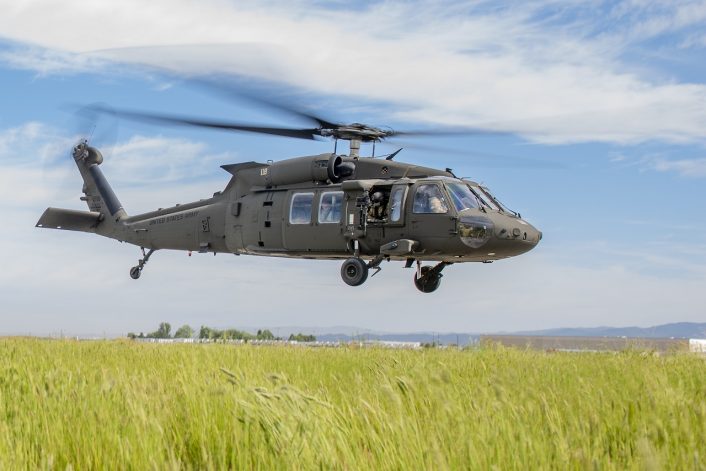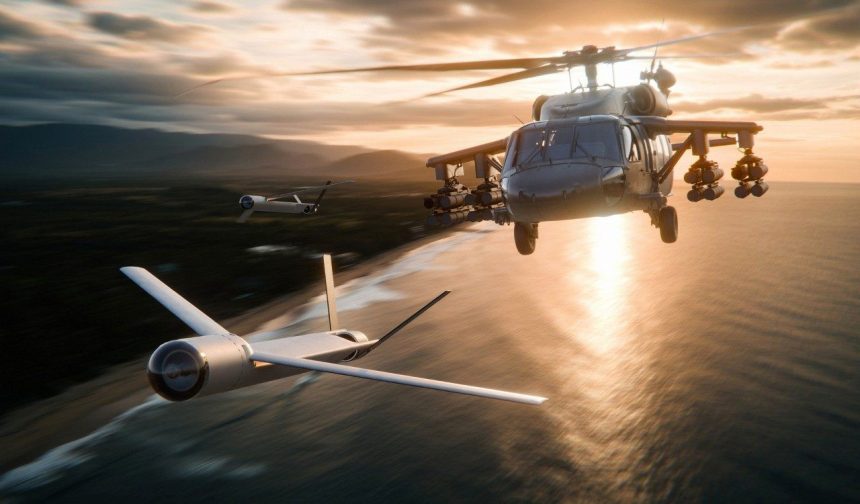The initial $43 million contract focuses on the airframe’s enhancement and inclusion of a digital backbone to allow for UAS integration.
Sikorsky has announced on Aug. 20, 2025, the award of a contract by the U.S. Army for the modernization of the UH-60 Black Hawk helicopter. This initial contract, worth $43 million, will fund the engineering efforts behind the modernization.
More specifically, the company says the contract will focus on foundational capabilities for modernization, namely the enhancement of the airframe and inclusion of a digital backbone capability to allow for rapid unmanned aerial systems (UAS) integration.
“Sikorsky is ready to implement new technologies that will strengthen the combat-proven Black Hawk helicopter and give U.S. Army soldiers greater advantage in areas like the Indo-Pacific,” said Hamid Salim, vice president, Army and Air Force Systems at Sikorsky. “Integrating launched effects into the Black Hawk will enhance its capabilities and provide a significant advantage. Modernization is reducing costs, increasing efficiency and improving the overall maintenance and sustainment for the aircraft.”
Black Hawk Modernization
As part of the contract, Sikorsky will support the Army’s near-term priority to integrate launched effects into the Black Hawk, enabling the helicopter to deploy UAS and other effects to enhance its mission capabilities. Lockheed Martin, Sikorsky’s parent company, has been demonstrating launched effects capability with Black Hawk for years in support of the service. The company mentioned it is currently working with the Army to deliver a federated capability in 2026.

The contract also includes development of requirements and architecture using model-based systems engineering (MBSE). MBSE is a relatively new methodology which uses digital modeling and simulation to support the entire lifecycle of a system, from conception and design to verification and validation activities, through to decommissioning.
Model-Based Systems Engineering
MBSE is considered more efficient than traditional methods, and it helps in identifying and resolving problems even before physical prototypes are built. Also, it allows to reduce the risk of errors thanks to the visual and interactive nature of models which improve communication and decision-making among engineering teams, while also allowing greater traceability, complexity, accuracy and speed.
During the X2 Technology Demonstration earlier this year, where The Aviationist was among the outlets invited to attend, the company it was actively developing a sustainment digital twin of the Black Hawk as part of its next generation sustainment solution. A digital twin is an interactive digital representation of a system, enabled by MBSE, which brings many advantages to design, simulate, and optimize systems.
In the latest press release, the company says the MBSE and digital engineering effort will focus on developing a digital thread of the Black Hawk for collaborative and effective design, testing and maintenance of the aircraft. As part of the Black Hawk digital backbone effort, which supports a Modular Open System Approach (MOSA), Sikorsky will develop advanced systems and software that will facilitate rapid capability insertion to quickly respond to future platform mission needs.

The MOSA, which we can now find in every new military program, is one of the best tools available to keep a platform always up to date with the current scenarios and at a low cost. For an instance, if a new threat appears on the battlefield, a company – even other than the Original Equipment Manufacturer – can develop an upgraded system to counter it and this can be quickly installed on the aircraft.
The Road Ahead
Sikorsky detailed the road ahead, mentioning that, in addition to the digital backbone, a more powerful engine, airframe enhancements and a main fuel upgrade will allow the helicopter to carry more payload at greater range, and future upgrades to flight controls to include autonomy and AI features that will assist pilots in tough conditions increasing mission safety and effectiveness.
These would be likely the continuation of efforts already started by Sikorsky, such as the General Electric GE T901 engine developed as part of the Improved Turbine Engine Program (ITEP) and in testing on the Black Hawk. Sikorsky has also been working for a long time on autonomy, with multiple demonstrations of the MATRIX autonomous flight system installed on the UH-60.
“Together with our team of hundreds of American suppliers, we are committed to delivering the most advanced and capable modernized Black Hawk to the U.S. Army,” Salim said. “We look forward to continuing our work with the Army to ensure that the Black Hawk remains a vital component of our nation’s defense capabilities for years to come.”
As for the launched effects, the U.S. Army has been looking into Air Launched Effects (ALE) as part of the Future Vertical Lift (FVL) program. The service defines these autonomous ALEs as a critical component of the Army aviation’s advanced teaming capability to penetrate, disintegrate, and exploit Anti Access/Area Denial (A2/AD) threats, mid-tier Integrated Air Defense Systems (IADS) and long to medium-range fires in the close and deep maneuver areas, supporting the future Multi-Domain Operations battlefield.
As mentioned earlier, multiple demonstrations already saw the UH-60 involved in the testing of the ALEs. These mainly involved the Area-I ALTIUS (Air-Launched, Tube-Integrated, Unmanned System) family of systems, but it is likely that new ones might be developed specifically to be employed on the Black Hawk.









